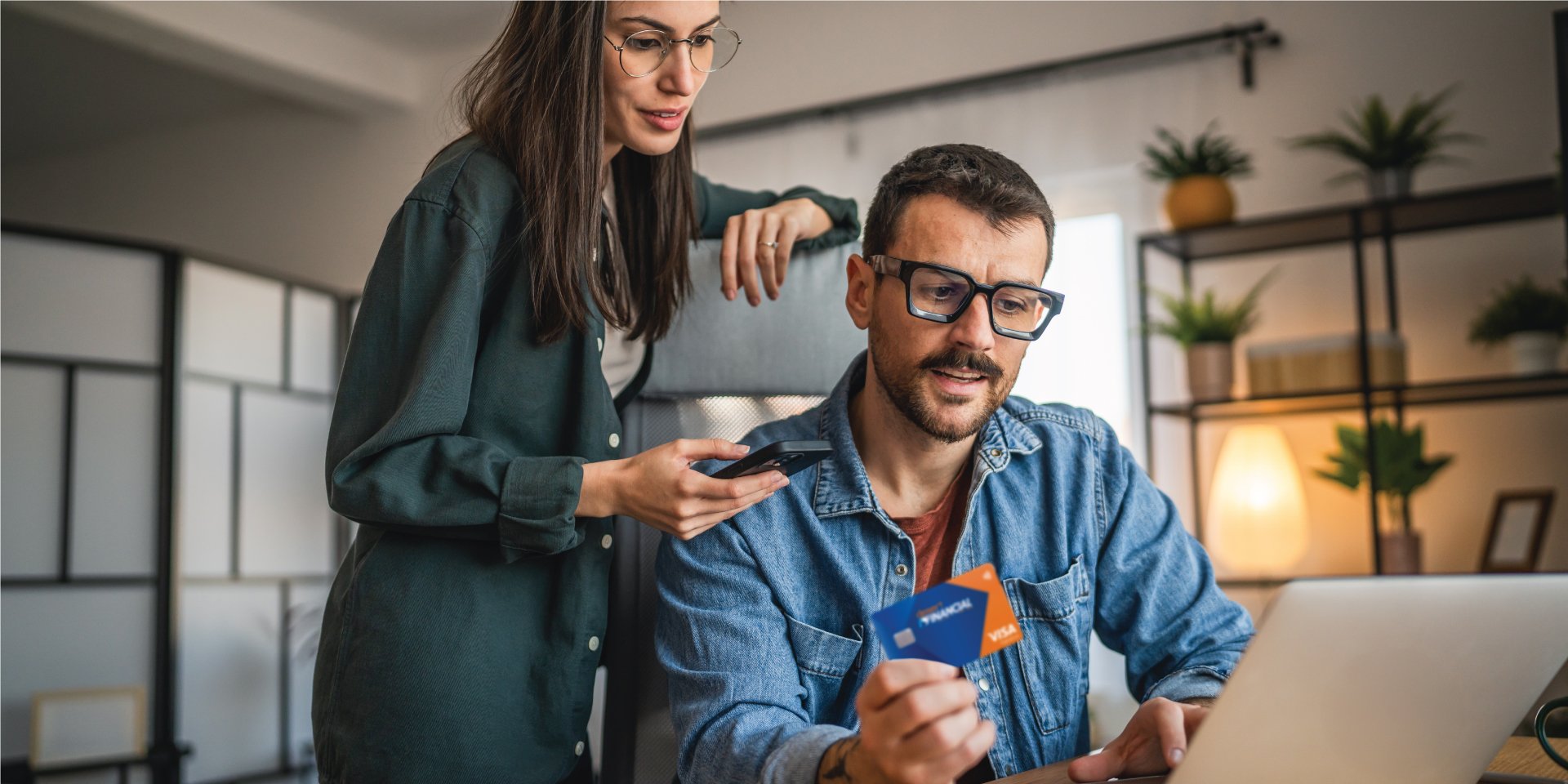
Security
Check and deposit fraud: How to identify and prevent it and protect your money
In this article
- Familiarize yourself with the most common check and deposit scams.
- Learn how to spot a fake check.
- How to dispose of old check and financial documents safely.
Check fraud is a growing problem, costing individuals and businesses millions of dollars each year. Unfortunately, savvy fraudsters manage to develop increasingly sophisticated schemes, keeping pace with financial institutions working hard to enhance security measures. Scams like counterfeit checks, fraudulent deposits and more can result in significant financial losses, damaged credit and legal trouble.
Here’s the good news: With a combination of vigilance and knowledge, check and deposit fraud can be prevented. This guide will help you recognize fraudulent checks, identify deposit fraud and take steps to protect yourself and your business.
Common check and deposit fraud scams
Fraudsters like to keep folks on their toes. They switch up their schemes, using a variety of tactics to trick individuals and businesses into depositing fake checks or providing access to their financial information. Take a look at some of the most common check and deposit fraud scams:
1. Counterfeit checks
Counterfeit check scammers can be true artists, creating fake checks that appear legitimate, printed with high-quality materials and often using real banking information from actual accounts. Victims of this scam deposit the check and, by the time the bank realizes it's fraudulent, the scammer has already withdrawn funds.
2. Overpayment scams
Small businesses, freelancers, and online sellers are common targets of this scam. The fraudster will send a check for more than the agreed-upon amount of a good or service, then request a refund of the excess via an untraceable payment method such as a wire transfer or gift card. When the check eventually bounces, the victim is left covering the lost money.
3. Fake job or mystery shopper scams
This scam despicably targets vulnerable jobseekers. “Employers” offer jobs that involve processing payments or acting as a secret shopper. They then send victims a fake check, instructing them to deposit it and send a portion of the funds to a third party. Once the check is revealed as fraudulent, the victim is responsible for the lost money.
4. Lottery and sweepstakes scams
They say if it seems too good to be true, it probably is. In this scam, victims receive a check in the mail claiming they have won a lottery or sweepstakes, but that they must first pay taxes or fees “covered” by the false check to receive the full amount. Once the check is found to be fake, the victim is left with financial losses.
5. Account takeover fraud
These bold scammers gain access to their victims’ bank accounts by stealing their personal information. They are then able to change account details, order checks and attempt withdrawals.
By understanding these common scams, you can take proactive steps to avoid falling victim to fraudsters.
How to spot a fake check
Some counterfeit checks are more difficult to spot, especially when fraudsters use high-quality printing techniques. Keep your eyes open for the following red flags to help you identify a fake check:
1. Check origin
- Be cautious if you receive a check unexpectedly, especially from an unknown sender.
- If the check claims to be from a well-known company, contact the company directly to verify its authenticity.
2. Bank information
- A legitimate check should include a valid bank name, address and routing number.
- Look up the bank online - if the bank’s name appears unfamiliar or the address is incorrect, that’s a bright red flag.
3. Security features
- Look for the identifiers of a legitimate check such as security threads and microprinting. If a check lacks these features, it could be fake.
- Hold the check up to the light to look for a watermark. If there isn't one, proceed with caution.
4. Signature and printing quality
- Look for checks with blurry logos, missing details or uneven signatures - these could be phony.
- A genuine check should have a clearly printed and consistent signature.
5. Check serial number
- If the serial number is missing or appears altered, the check is likely a fake. There are features that can be added to a business checking account to scan for these impostors.
If you suspect a check may be fake, contact the issuing bank to verify its legitimacy before depositing it.
How to spot deposit fraud
When someone deposits a check or funds into a bank account under false pretenses, that’s deposit fraud. Here’s how to recognize and prevent this type of fraud:
1. Unverified deposits
- If someone deposits a check into your account and requests you to send back some of the money before the check clears, this is a major red flag.
- Always wait for the full check-clearing process before withdrawing funds from a deposit.
2. Unexpected fund transfers
- A surprise deposit may sound exciting, but if you notice deposits in your account that you did not authorize, report them to your bank immediately.
- Scammers may attempt to use your account to launder money or carry out fraudulent activities. If you have doubts about the checks validity or the credibility of the issuer (the person who wrote you the check) it's best to alert your financial institution, even if the funds are available before making a withdrawal.
3. Inconsistencies in payee information
- If a check has mismatched or altered payee names, that’s a bad sign.
- Verify that all checks you receive are made out correctly before accepting or depositing it.
How to protect yourself against check and deposit fraud
Although fraudsters are savvy, creative and continually developing new scams, you can take proactive measures to safeguard your finances.
1. Use electronic payments
- Digital transactions such as wire transfers, mobile payments and direct deposits are often more secure than checks.
- Reduce reliance on paper checks and opt for electronic payments whenever it’s available.
2. Verify checks before depositing
- If something seems suspicious, contact the issuing bank to confirm the check’s authenticity before making a deposit. As a rule of thumb, it’s also a good idea to alert your own bank or credit union to any concerns—even if you’ve already spoken with the issuing financial institution.
- If you're unsure about a check’s validity, request an alternative payment method such as a cashier’s check.
3. Monitor your bank account regularly
- Set up alerts with unusual transactions or deposits.
- Regularly review your bank statements and report any suspicious activity immediately.
4. Shred old checks and financial documents
- Dispose of old bank statements and financial documents by shredding them to prevent identity theft.
5. Be wary of requests for personal information
- Never provide your banking details to unknown individuals or businesses.
- Scammers often pose as banks or employers to gain access to your personal information.
6. Report suspicious activity immediately
- If you suspect check or deposit fraud, contact your bank right away.
- Prompt reporting can help prevent further financial loss and you’ll be protecting other potential victims.
Knowledge is power – stay sharp
While check and deposit fraud continue to evolve, awareness and a vigilant eye for detail can help protect your finances. Always verify the legitimacy of checks before depositing them, be cautious of unexpected deposits and prioritize electronic payment methods whenever possible. If you encounter a suspicious transaction, report it to your financial institution immediately.
Staying informed and proactive is the best defense against falling victim to check and deposit fraud. We’re here to support you in the fight against fraud!
Recommended Articles
Subscribe to our blog
Fill out the form below to sign up for our blog.







